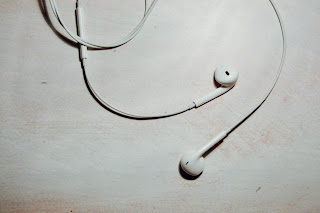No Placeholders
I don't have a comprehensive shopping philosophy so much as a series of disjointed rules of thumb. One of the ones I'm trying out is:
No Placeholders
If I put something in my (physical or digital) shopping cart, and I'm already thinking:
- This will do for now.
- This is fine until something better comes along.
- This is almost what I want.
- There are a lot of good things about this, it just has one dealbreaker.
- I'll keep this until I find… (something that is fundamentally different in some way)
These are red flags that should be heeded! Unless I really need it right away, I should just put the close-enough thing back, and do without this type of item until that magic day when "something better comes along." Most of the time, I don't really need it right away. I can make do without "for now." It's okay to have open "slots" in my possession set, ready to be filled by the perfect item when (if) it comes along. There's nothing wrong with keeping something on the Buy With Intention List for months or even years.
Case Study #1: Two Gray Sweaters
Suppose I have choice between two gray sweaters, one with a $119 price tag and a perfect fit that somehow makes me look both sexy and important; one that looks okay, decent, slightly frumpy, not terrible, which costs only $39.99. In the past I would have ordered them as follows:
- First choice -- buy the perfect one if I can afford it and I think it's worth the money.
- Second choice -- buy the "meh" one even though it doesn't really thrill me.
- Third choice -- buy nothing.
Under my new philosophy, first choice remains the same, but I need to swap second and third. If I can't really justify the cost of some joy-sparking item I'm drawn to and delighted by, my second choice should be to buy nothing at all. Buying an item I dislike isn't halfway between nothing and something; it's negative something!
Worse, it often leads to having several "negative somethings"; my pre-overhaul wardrobe had a lot of duplicates, items that served the same purpose but were all flawed in different ways. It's certainly better to spend ~$120 on one great gray sweater than four bad ones.
No placeholders. Get the thing you love, or nothing at all.
Case Study #2: No Such Thing As Perfect Headphones
Headphones are an item I hate shopping for, because I hate all of them. I find almost every pair of headphones ugly, uncomfortable, and kind of gross (the way all plastic, mass-produced electronics are gross from an ethical standpoint). Recently, I was shopping for a new pair because, while I had adequately comfortable headphones at home, at work, where I spend most of my listening time, I only had earbuds which weren't great for long-term use. None of the available options thrilled me, and I realized that anything I bought would be a placeholder. Even the high-end ones left me cold.
So I decided to hold off. Maybe someday someone will invent a pair of lighter-than-air, marshmallow-cushioned headphones made of biodegradable bamboo. For now, I just swapped my existing devices so that I wear the headphones at work and the earbuds at home.
No placeholders. When there's nothing you love, get nothing.
Case Study #3: All Smoke Detectors Are The Same
My original name for this rule of thumb was Only Buy What You Love. I think is easier to grasp, but sometimes you need to buy something you don't love. I recently had to replace a smoke detector that was on the fritz in my home. All smoke detectors are pretty much the same. They're all ugly, annoying, and fundamentally unlovable. But I don't want to die in a fire, so I need to own working ones. In this category, I'm not necessarily going to do better than "uh, I guess this is fine." The key thing is that, while I don't love this item, it also isn't a placeholder. Once I've made the purchase, I'm happy, I'm done, I'm not actively looking to upgrade. Adequate really is good enough.
Placeholders aren't an issue here. When there's nothing you love, but you still need something, get something adequate and forget about it.
Case Study #4: The Almost Perfect Jacket
For me, the most difficult time to apply this rule is when I find something that has a lot of positives, something that I do love, even when I know it has a fundamental problem. I found a jacket in Goodwill that fit perfectly and cost only $6.99, but it was a pale green that was not on my color palette. Gasp! Now that I've converted almost my entire wardrobe to True Summer Colors, buying something off-palette would feel like a step back. It wouldn't look as good on me as my other clothes, and it wouldn't go with anything.
I found it really hard to pass on the jacket because of all the actively positive things about it. In a lot of ways, I did love it! And it's especially hard to pass on something with a lot of positives when the price is right. But, fundamentally, I knew that the jacket would be a placeholder because if I found something similar in a better color, it would be usurped.
No placeholders. When you already know the thing you halfway love has a fundamental flaw, get nothing.


Comments
Post a Comment